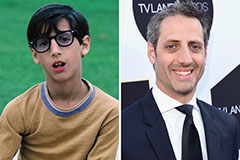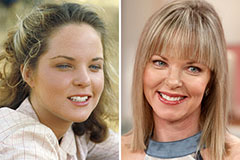The Main Principles Of Dementia Fall Risk
Table of ContentsThe Single Strategy To Use For Dementia Fall RiskThe Ultimate Guide To Dementia Fall RiskGetting My Dementia Fall Risk To WorkUnknown Facts About Dementia Fall Risk
An autumn risk evaluation checks to see just how likely it is that you will drop. It is mostly done for older adults. The evaluation typically includes: This includes a series of questions regarding your overall wellness and if you have actually had previous falls or issues with equilibrium, standing, and/or strolling. These tools evaluate your toughness, equilibrium, and stride (the means you stroll).Interventions are referrals that may decrease your danger of falling. STEADI consists of three actions: you for your risk of falling for your threat factors that can be enhanced to attempt to protect against falls (for example, balance problems, damaged vision) to reduce your threat of dropping by using efficient techniques (for instance, supplying education and learning and sources), you may be asked several inquiries including: Have you dropped in the past year? Are you stressed about dropping?
You'll rest down once again. Your service provider will check for how long it takes you to do this. If it takes you 12 secs or more, it might imply you go to higher risk for a loss. This test checks toughness and equilibrium. You'll rest in a chair with your arms went across over your upper body.
Move one foot halfway onward, so the instep is touching the big toe of your various other foot. Relocate one foot completely in front of the various other, so the toes are touching the heel of your other foot.
Things about Dementia Fall Risk
The majority of drops occur as a result of multiple adding elements; for that reason, handling the risk of dropping starts with determining the variables that add to drop threat - Dementia Fall Risk. Several of one of the most pertinent danger factors include: Background of previous fallsChronic medical conditionsAcute illnessImpaired gait and equilibrium, lower extremity weaknessCognitive impairmentChanges in visionCertain high-risk medications and polypharmacyEnvironmental factors can additionally boost the danger for falls, consisting of: Insufficient lightingUneven or harmed flooringWet or unsafe floorsMissing or damaged hand rails and grab barsDamaged or poorly fitted equipment, such as beds, mobility devices, or walkersImproper use of assistive devicesInadequate guidance of individuals residing in the NF, consisting of those who exhibit hostile behaviorsA successful fall danger monitoring program needs an extensive clinical evaluation, with input from all participants of the interdisciplinary group

The treatment plan ought to additionally include interventions that are system-based, such as those that promote a risk-free environment (appropriate lighting, hand rails, get bars, etc). The effectiveness of the treatments should be reviewed occasionally, and the treatment plan modified as essential to mirror adjustments in the fall risk evaluation. Carrying out a loss threat monitoring system using evidence-based finest technique can reduce the occurrence of falls in the NF, while limiting the potential for fall-related injuries.
The smart Trick of Dementia Fall Risk That Nobody is Talking About
The AGS/BGS guideline recommends evaluating all adults aged 65 years and older for fall risk yearly. This testing contains asking clients whether they have actually dropped 2 or even more times in the past year or sought medical focus for a fall, or, if they have not fallen, whether they really feel why not check here unstable when walking.
People that have actually dropped as soon as without injury ought to have their balance and gait assessed; those with stride or equilibrium problems should get extra evaluation. A history of 1 loss without injury and without stride or equilibrium issues does not call for additional assessment past his comment is here ongoing yearly loss danger screening. Dementia Fall Risk. A loss threat evaluation is needed as component of the Welcome to Medicare exam

The smart Trick of Dementia Fall Risk That Nobody is Discussing
Documenting a drops history is one of the quality indicators for fall avoidance and administration. A critical component of threat analysis is a medication evaluation. Numerous courses of drugs enhance fall risk (Table 2). copyright drugs in particular are independent forecasters of falls. These drugs tend to be sedating, alter the sensorium, and hinder equilibrium and gait.
Postural hypotension can usually be eased by lowering the dosage of blood pressurelowering drugs and/or quiting medications that have orthostatic hypotension as an adverse effects. Use above-the-knee support hose pipe and sleeping with the head of the bed elevated might also lower postural decreases in blood stress. The recommended aspects of a fall-focused checkup are revealed in Box 1.

A TUG time better than or equivalent to 12 seconds suggests high loss risk. Being unable to stand up from a chair of knee height without making use of one's arms indicates raised fall danger.
 Josh Saviano Then & Now!
Josh Saviano Then & Now! Jenna Von Oy Then & Now!
Jenna Von Oy Then & Now! Tiffany Trump Then & Now!
Tiffany Trump Then & Now! Melissa Sue Anderson Then & Now!
Melissa Sue Anderson Then & Now! Terry Farrell Then & Now!
Terry Farrell Then & Now!